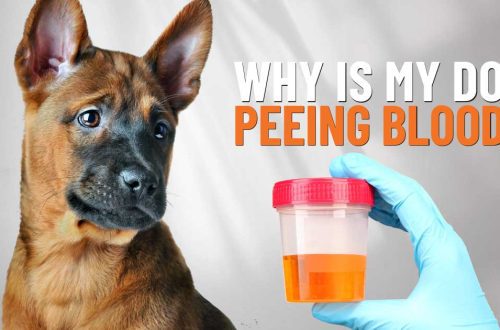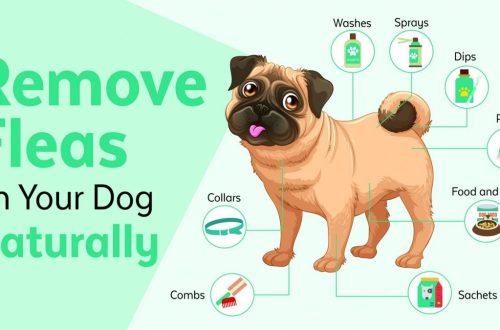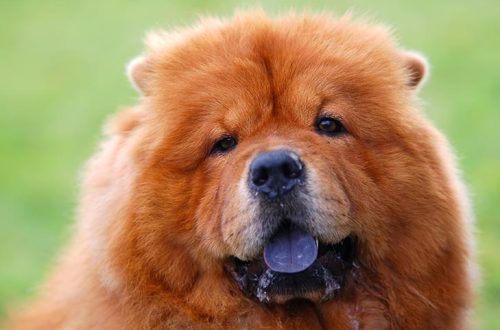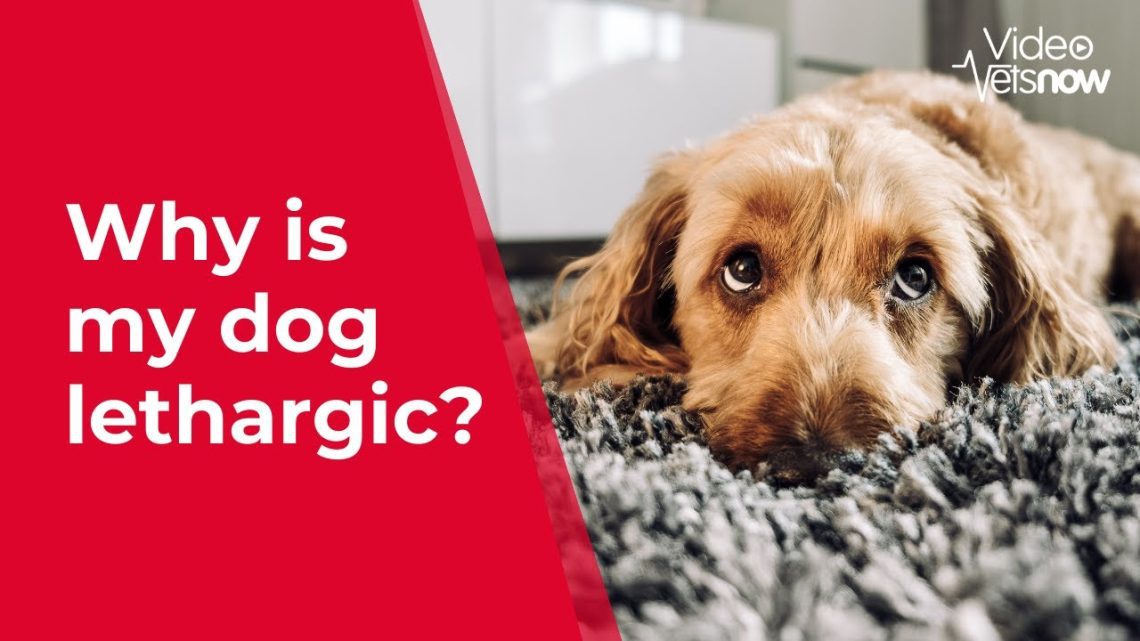
Ní itheann an madra agus tá sé tar éis éirí táimhe - cad é an chúis?
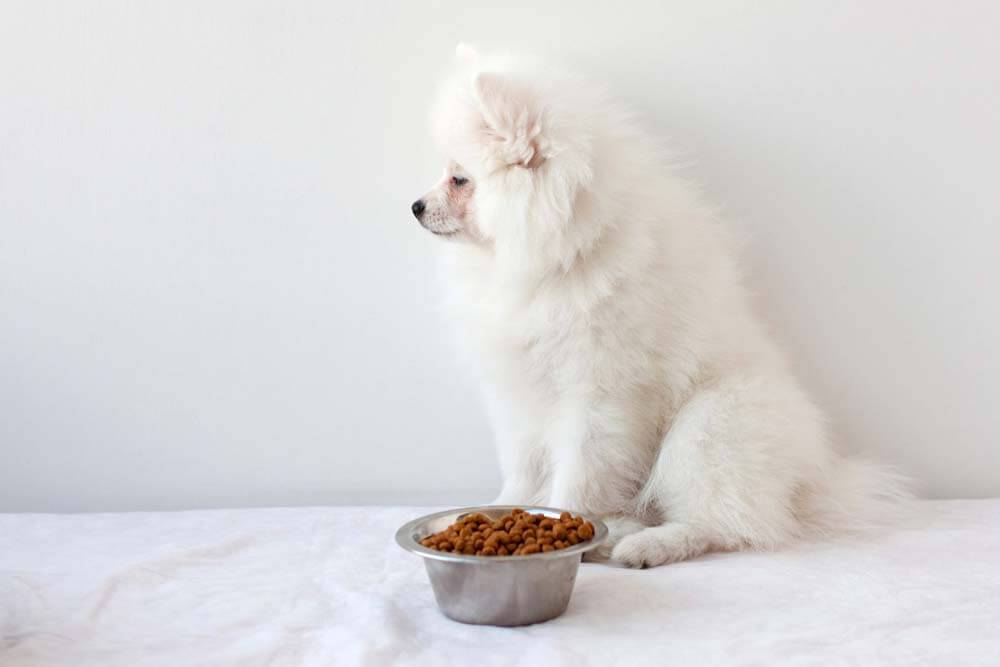
It is important to know that refusal to eat and lethargy can be due to physiological (normal changes in the body that do not require treatment) and pathological (some organs are affected by the disease and fail to work) reasons.
In this article, we will learn what to do when a dog refuses to eat and analyze the possible reasons for this.
Clár ábhair
When is food refusal okay?
Let’s take a closer look at the physiological reasons why a dog does not eat.
Boredom and bad mood. The dog also has a bad mood, and with prolonged loneliness, she can be bored. Some breeds are more prone to emotional mood swings and deal with them differently. Some get depressed, as a result of which the dog loses its appetite, others find entertainment for themselves, play with toys, etc.
tosca comhshaoil, such as hot weather, can also change the behavior of pets. At high air temperatures, there is a lack of fluid in the body, as a result of which the dog will be lethargic and may even refuse to eat. These animals need to drink about 50 ml per day, so the amount of water consumed must be controlled to avoid dehydration.
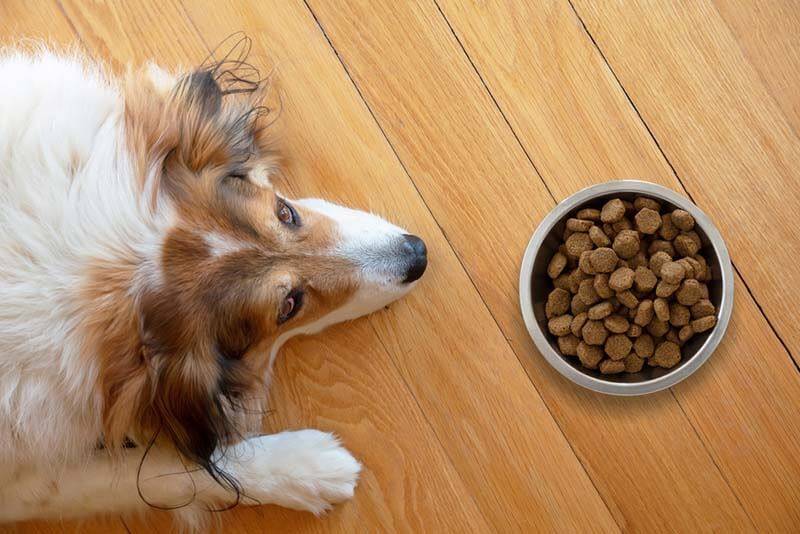
Róthrom. If the number of calories consumed per day is higher than those expended, the pet will gain weight. And he, in turn, can change the habitual behavior of the animal, it will become less active, food preferences may change.
Tuirse is another factor explaining the fact that the dog does not eat and has become lethargic. If the day before the symptoms appeared, the dog had increased activity, games, training, you just need to give it a little time to rest. Usually, within 1-2 days of rest, the pet’s condition returns to normal, and he returns to the usual rhythm of life.
Conversely, too gníomhaíocht íseal may cause loss of appetite. Since the dog has nowhere to put his energy supply, he reduces the amount of calories consumed by refusing to eat.
Strus may also affect appetite and activity. Dogs may experience a change of residence, the absence of a favorite toy or owner. Stress can be caused by new family members, guests, new pets, or even the season. In autumn, dogs are blue, and in winter they are cold.
Aois dogs also affect her eating habits and activity. Elderly pets pay more attention to rest and sleep than active games. Changes in the body occur gradually and in different breeds appear at different ages. Large dog breeds age faster than miniature ones.
There are features of behavior and tréithe gnéis. For example, an uncastrated male usually eats poorly during estrus due to mating dominance. Female dogs change their behavior during estrus, pregnancy or in the first days after childbirth. Lethargy, swelling of the nipples, an increase in the volume of the abdomen can signal the presence of pregnancy or false pregnancy in the bitch, which explains why the dog does not eat and becomes lethargic.
Cáilíocht an bhia also affects appetite. Economy food or dirty water can lead to stomach and intestinal upset. The dog will remember this and will refuse to eat and drink in the future. She may also dislike the smell or taste of food. You just need to change the water and give a fragrant treat so that the pet has an appetite.
Pickiness in food – not the rarest reason for refusing it. Some dogs will also not eat from someone else’s bowl, someone else’s hands, or simply if the food is unusual for them.
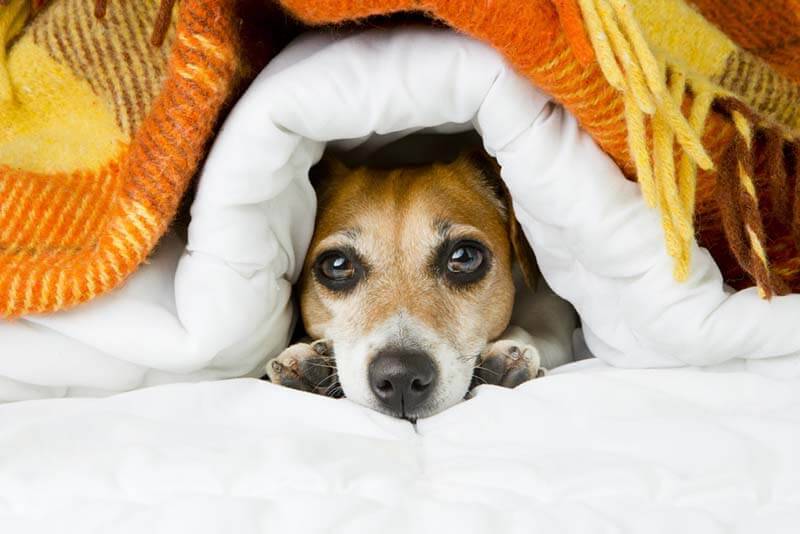
Possible reasons for food refusal and reduced activity
As we said above, the reasons can be not only physiological, but also pathological. Refusal to eat, lethargy, a change in dog habits can indicate the development of a disease in the body. Unfortunately, these are very common symptoms and they apply to many diseases. Next, we will analyze in more detail the reasons why a dog may eat poorly.
Stróc teas
The first signs of sunstroke are very similar to normal fatigue. The dog does not eat, drinks a lot, breathes heavily with his tongue hanging out, becomes lethargic, drools profusely and his body temperature rises. Heatstroke is easy to recognize because it is caused by high ambient temperatures, and its symptoms usually appear after long walks in the summer, outdoor exhibitions, or training. Heat stroke is a dangerous condition that leads to dehydration, a jump in body temperature, and even death of a pet.
Fofhuarú
The opposite of heat stroke, which can also be manifested by the fact that the dog lies exhausted and rather lethargic. Her body temperature drops, the body is in energy saving mode, because of this, the pet moves little and is not interested in food and toys. The skin turns pale, the sensitivity of the paws decreases, they become cold.
Galar Ae
The liver, as an organ, plays a very important role in the metabolism of carbohydrates, fats, proteins and vitamins. It also neutralizes poisons that enter the body or are produced in it. If the liver fails, the general condition of the body worsens, the dog does not eat, becomes depressed, drinks and urinates a lot, she develops vomiting, diarrhea or constipation, jaundice of the skin, eyes and gums, and the volume of the abdomen increases.
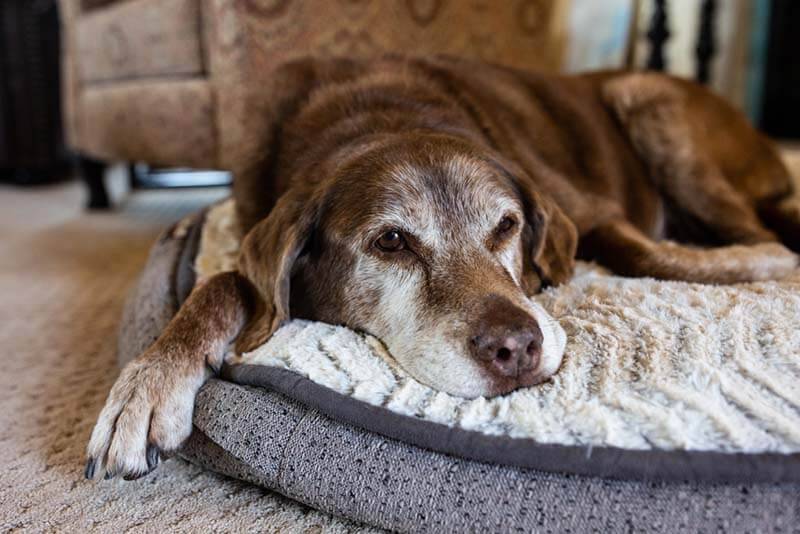
Galair Duán
The kidneys are the main organ where urine is formed and blood proteins are filtered. In kidney disease, the dog does not eat, rarely urinates, arches its back, and reacts aggressively to palpation of the back. Her condition becomes depressed, the temperature rises, the volume of urine excreted decreases, vomiting often progresses. The skin of the animal becomes dry and inelastic, the smell of acetone appears.
Galair an chonair gastrointestinal
Obstruction, gastritis (inflammation of the stomach), enteritis (inflammation of the intestines) cause pain, flatulence and bloating. The causes of diseases can be an incorrect diet, viral and bacterial infections, genetic predispositions, intolerance to food components, eating foreign bodies or constipation. Symptoms of such conditions: the dog does not eat, she has vomiting, diarrhea, or, conversely, there is no stool, the stomach is tense and painful.
oinceolaíochta
Cancer occurs in dogs of all ages, puppies and adults. Often it runs latently for a long time, or its symptoms are disguised as other diseases. With the development of oncological diseases, in addition to visible tumors, symptoms such as apathy, an increase in the volume of the abdomen, a change in breathing, periodic fever, and the dog also does not appear.
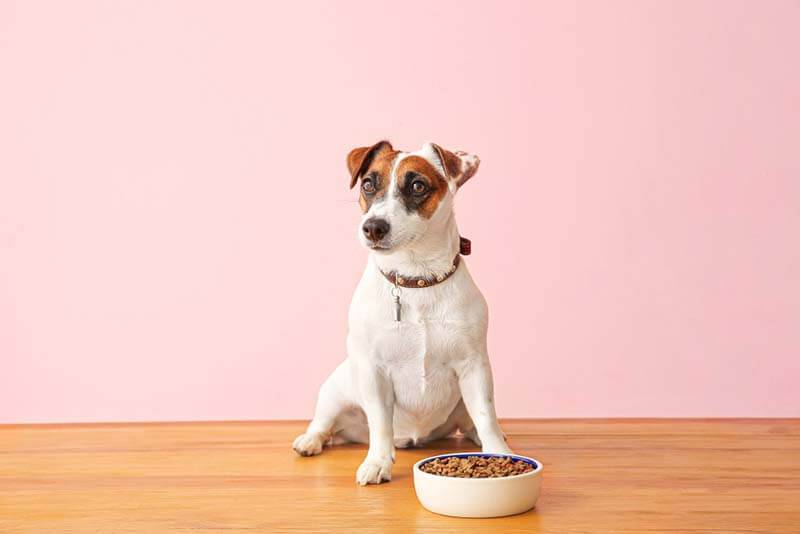
Ionfhabhtuithe víreasacha
When a virus enters a dog’s body, its immune system tries to fight it. As a result, the temperature rises, and the dog does not eat. There are several viral diseases common in our country. These are parvovirus enteritis, canine distemper, hepatitis, rabies, leptospirosis, dog parainfluenza. Their accompanying symptoms depend on the affected body system – cough, nasal discharge or loose stools, and vomiting may occur.
Galair an chuas béil
All pathologies of the oral cavity are accompanied by painful sensations. Inflammation of the gums, deposits of tartar and, as a result, the destruction of the roots of the teeth, the development of flux, exposed tooth canals – all of them can be reasons for abandoning the usual food.
Paiteolaíochtaí an chuas cófra
The chest cavity contains the heart, lungs, bronchi, trachea and esophagus. These are life-supporting organs and if they do not perform their function in full, the general well-being of the dog worsens. In addition, there is shortness of breath, intolerance to physical activity, coughing, the type of breathing changes, the dog breathes with his stomach.
Pain or itching
Itching, redness, scabs, inflammation on the skin, any pain – the dog feels all this, like a person. Therefore, if you remember yourself when something hurts or itches all the time, you will understand why the dog does not eat and changes its behavior.
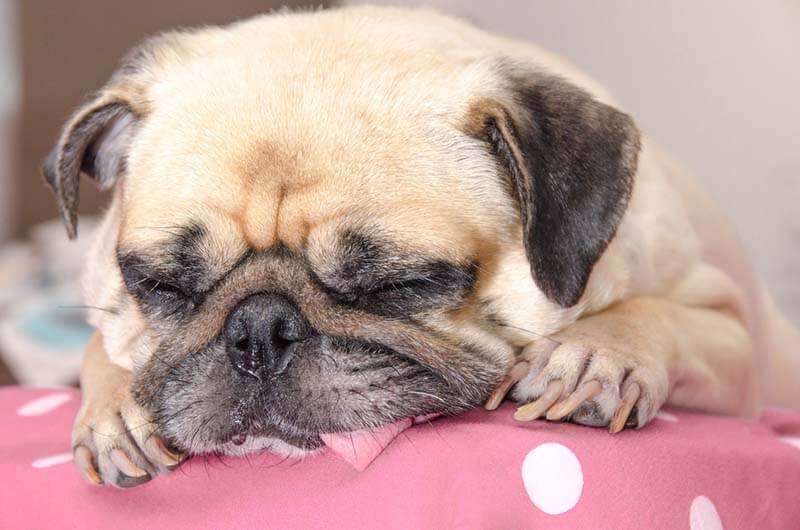
Diseases of the osteoarticular apparatus
Any changes in the muscles, joints and ligaments cause discomfort to the pet. The dog becomes lethargic, does not eat, she has stiffness in movements, lameness. The pet refuses the usual movements – climbing stairs, jumping. He may also have a wobbly gait.
Nimhiú
If the dog does not eat, she has diarrhea, vomiting, high fever, it can be assumed that this is poisoning. In life, a dog can encounter many poisons – food, household chemicals, medicines, plant poisons of indoor plants and poisons on the street. Symptoms of poisoning will depend on the type of poison and on which organ it acts on.
Inmhíolaithe seadánacha
There are a huge number of parasites in the world, with which a dog can become infected at any age and at any time of the year. There are internal parasites – helminths, as well as external – fleas, mosquitoes, subcutaneous and ixodid ticks. Mosquitoes and ticks can carry internal parasites that affect the heart, blood cells, and muscles. Any parasite can be the reason why a dog won’t eat.
Diagnóisic
Poor appetite in a dog is just a symptom of the disease, and a diagnosis is needed for recovery. For this, research is needed. During the examination, the veterinarian usually makes a preliminary diagnosis, determines where the problem is localized: in the abdominal or chest cavity, muscles, bones, in the mouth or on the skin. Next, the specialist prescribes an examination.
Scrúdú bhoilg, will help to identify diseases of the gastrointestinal tract, liver, kidneys of various etiologies – viral, bacterial, endocrine. The abdominal cavity is examined using ultrasound (ultrasound diagnostics) and x-rays, where the specialist describes how the organs look, whether their structure has been changed and whether foreign bodies are present. Blood tests (clinical and biochemical) will show how the organs work, determine if there are signs of inflammation or problems with red blood cells.
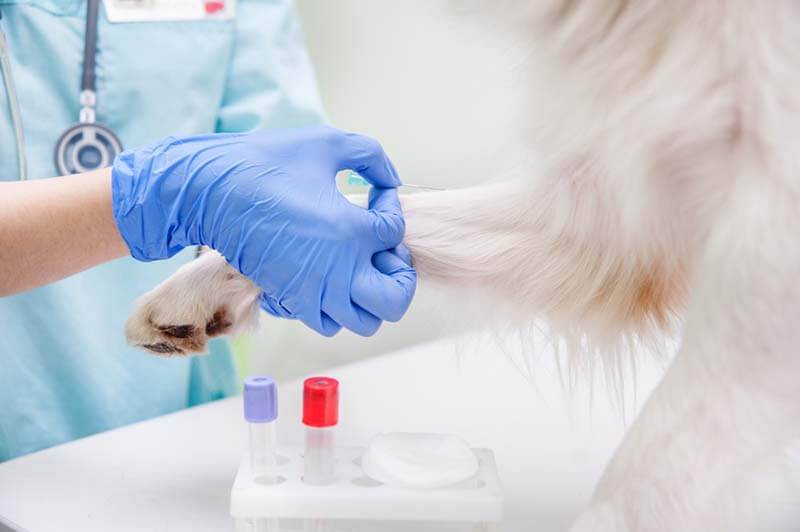
Chest examination is performed using an x-ray, if a pathology of the heart is suspected, then it is supplemented by ultrasound and ECG. Blood tests will show if a lung or heart problem affects other organs. After all, the heart delivers blood to all organs, and the lungs fill the blood with oxygen, with diseases of the lungs and heart, all body structures will suffer.
Matáin agus cnámha X-rays are examined, if it is necessary to assess the consequences of extensive injuries, ultrasound is used.
For skin examination when diagnosing itching, skin scrapings, cytology and trichoscopy (examination of wool) will be required.
If the dog does not eat and is lethargic, illness may be suspected. béalchuas. To be convinced of this, it is enough to examine her mouth. As a rule, this way you can see the main problems or bad teeth. In the latter case, the patient is referred for an appointment with a dentist, the specialist will prescribe a sanitation of the oral cavity with the removal of teeth or additional examinations in the form of dental images.
After standard tests have been carried out, there may be a need for more specific studies. For example, oncocytology – when a tumor is detected, sowing fluids – if a bacterial infection is suspected, PCR diagnostics for viruses or examinations under anesthesia in the form of endoscopy (insertion of a camera to visually examine the organ).
Contúirt do dhaoine
Most often, dog diseases are not dangerous to humans, but still, it is worth observing personal hygiene measures and protecting yourself. This is important in the presence of symptoms of diseases such as:
Inmhíolú péisteanna. Some parasites can be passed from dog to person and vice versa. For example, these are liver flukes (flukes, schistosomes), cucumber, pork tapeworm, roundworms, pinworms, tapeworms, hookworms.
Bites by ixodid ticks. The dog itself will not infect you with anything, but ticks can fall from its body and crawl onto a person.
Galair víreasacha. For example, rabies is a deadly disease that has no cure in humans or dogs. Infected pets are immediately euthanized, and the person dies in agony.
ionfhabhtuithe baictéaracha. For example, leptospirosis, which is caused by bacteria and affects the liver, kidneys, muscles, and nervous system.
As we can see, not many dog diseases threaten humans. Avoiding them is quite simple – you need to regularly vaccinate your dog and treat it against external and internal parasites.
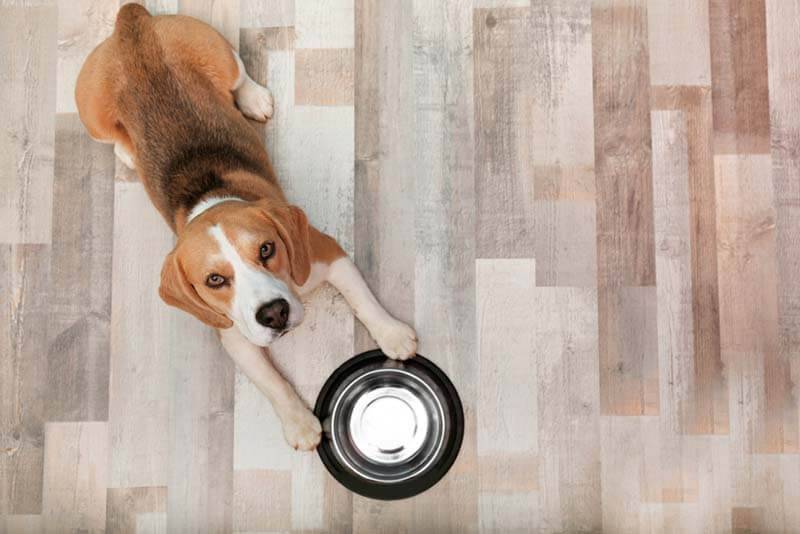
Cóireála
Conditions in which a lethargic dog does not eat or drink require active treatment, and this will vary greatly depending on the cause. Treatment is prescribed individually in each individual case, but there are some general rules that apply to a particular group of diseases.
With heat stroke it is urgent to cool the pet by covering it with wet towels, overlay with ice and exclude all loads. When supercooled, on the contrary, you need to warm, try to feed and drink warm food, create peace.
Le galar ae therapy is aimed at maintaining the efficiency of hepatocytes (the main cells of the liver), replenishing vitamins, fluids in the body. Antibiotics are often prescribed. A very important factor for recovery is the restoration of appetite, for the liver to work, the dog must eat its minimum daily calorie intake.
To restore kidney function The water balance in the body is very important. Therefore, intravenous drips and drugs are prescribed to correct anemia, reduce protein intake in food to facilitate kidney function. This is important because the kidneys produce a special hormone that affects the production of red blood cells – erythrocytes. They carry oxygen to organs that cannot function without it. Unfortunately, the kidneys are not a repairable organ and if more than 70% of the kidneys are affected, therapy may not help, and any treatment will not be effective.
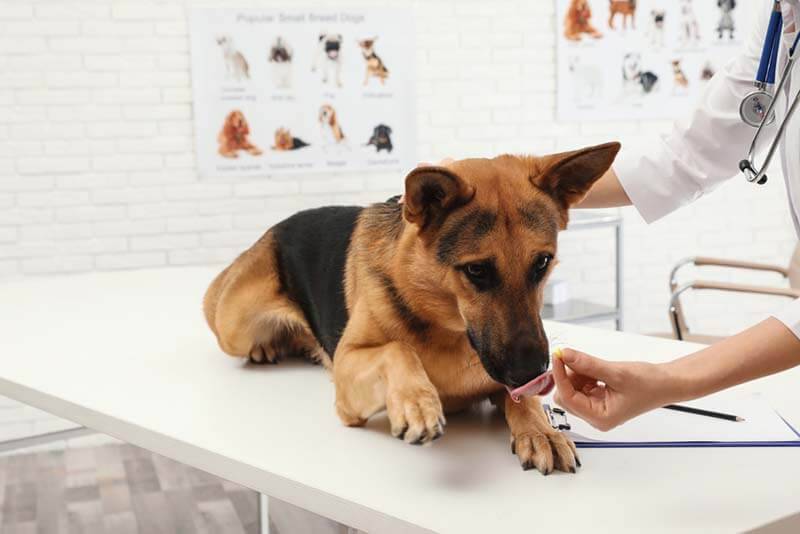
In the treatment of gastrointestinal diseases use different tactics. If the cause of the disease is foreign bodies or tumors, surgery is necessary, and in some cases chemotherapy. In other cases, gastroprotectors, drugs to accelerate intestinal motility or, conversely, to slow it down, antibiotics, sorbents and droppers are used.
With the development of viral diseases it is necessary to maintain immunity, therefore, immunostimulants and vitamins are prescribed. Symptoms of infection are relieved with antiemetics, antibiotics and droppers.
When a bacterial infection develops in the chest, abdominal cavities, reproductive organs, a course of antibiotics and symptomatic drugs will be offered. For example, with the development of pneumonia (bacterial pneumonia), oxygen therapy, bronchospasmolytics, drugs to thin the mucus in the lungs will be prescribed.
When there is pain in muscles, bones, joints, analgesia is prescribed – non-steroidal anti-inflammatory drugs, restriction of mobility, muscle relaxants. Further, rehabilitation can be prescribed in the form of massages, swimming or physical education.
For the treatment of heart disease specific therapy is used that enhances the contraction of the heart, drugs to reduce pressure, diuretics.
If the reason for refusing food was Paraisítí – helminths, subcutaneous mites, fleas or intracellular parasites, after their identification, drugs are prescribed to treat this particular type of parasite.
How to restore appetite
If the dog has no appetite and no health problems, try following our tips:
Put away food and bowls, skip a few meals and don’t give in to begging for treats. All dogs have primal instincts, and this will not allow you to starve the body. As soon as the pet is hungry enough, he will agree to eat food from his bowl.
Don’t leave food in the bowl after your dog has eaten. Remove any leftovers before the next feeding time.
If the dog has no problems with the gastrointestinal tract, allergies, give a lightly salted piece of fish or meat 15-20 minutes before feeding. Salt will increase the feeling of hunger. But do not get carried away – this is a one-time advice, it is not recommended to do this on an ongoing basis.
Walk your dog more and play. This will allow her not to be bored and burn calories.
Create competition offer food to another pet in front of the fussy. Dogs are greedy, and do not like to share food, toys or the attention of the owner, so they will immediately show interest in what was given to a competitor.
Athraigh do aiste bia. Sometimes it is necessary to change the brand or flavor of the food, add a new type of porridge to stimulate the dog’s appetite.
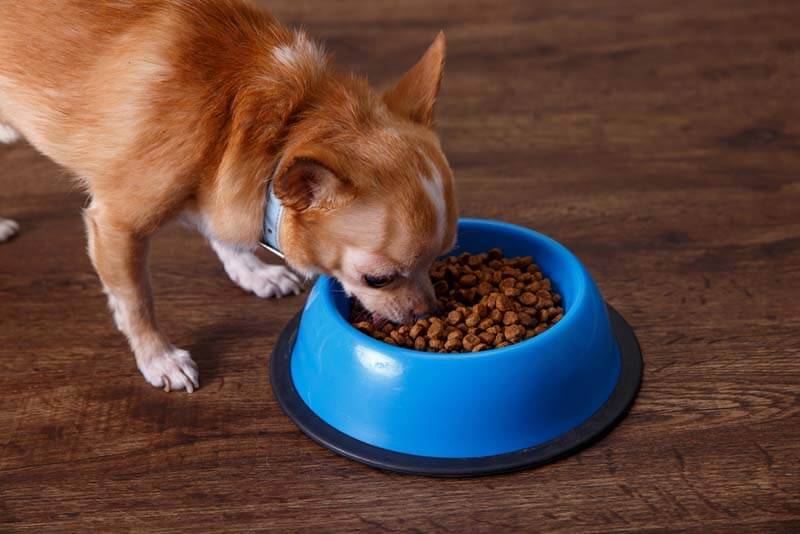
What to do if the puppy is not eating well?
If the puppy refuses to eat, it is better to immediately consult a veterinarian. A puppy is a child, and everything in his body is different from an adult dog. Hunger for more than a day for the baby will become critical, irreversible processes will begin in the body. The most common causes of food refusal in babies are viral infections and abdominal pain due to problems digesting food in the developing intestine. In such situations, full-fledged veterinary care is needed – preparations for the intestines, antibiotics, infusion therapy.
If the puppy does not eat well, chooses food, but is active, drinks and agrees to sweets, try to make out his diet. Most likely, something is preventing him from eating well – too much food kibble, unsuitable food, too high a calorie portion, problems with stool, or not enough play and activity.
Cén fáth a ndiúltaíonn puppy sláintiúil bia?
If the puppy is in good health, and the puppy is not eating well, take a closer look at how he behaves while eating. Perhaps there are objective reasons for refusing to feed.
Bia mícheart. More precisely – food not intended for puppies. After all, the size of the jaw of a puppy and an adult dog can be very different. Therefore, it is necessary to select the size of the granules specifically for your pet. Many manufacturers offer such feed. Most major brands have dry and wet food for puppies of toy, medium, large, and even giant breeds.
Gan mód. A puppy needs to be fed 3-4 times a day, an adult dog – 2 times a day, observing certain feeding hours and serving sizes. Perhaps you are feeding your pet too often or giving him too large portions.
Athruithe bia go minic. In search of better food, owners often change brands. This is fraught with two threats: firstly, the pet can get used to frequent changes and constantly wait for something new. Secondly, a sudden change in food can cause digestive problems in the animal.
Treats and food from the table. Treats in a dog’s diet should be limited in quantity; they cannot form the basis of a pet’s diet. Chocolate, sausage, cheese and other similar treats are strictly prohibited. So you not only pamper your pet, but also harm his digestive system. If you want to give your pet treats, then choose those specially formulated for dogs.

Conas a mhúineadh puppy chun beatha
Ba cheart go mbeadh an t-aistriú ó chineál bia amháin go ceann eile de réir a chéile. Measc beagán bia nua isteach sa seanbhia, ag méadú de réir a chéile ar chomhréir an dara ceann. Ar an mbealach seo seachnóidh tú agóid ocras ó na peataí.
A rather radical method is to show the animal that food in a bowl is his only choice. This method is only suitable for dogs that do not have stomach problems. Nutritionists recommend putting the food in a bowl during feeding and leaving it for half an hour or an hour. If the dog does not touch the food, remove the bowl until the next meal. Make sure that no one at home feeds the dog during this time! Do not be afraid that she will remain hungry. The animal may not eat for a couple of days, the main thing is the presence of a bowl of drinking water nearby.
In fact, the dog does not require variety in food, he is ready to eat one type of food all his life, if it is balanced and nutritious.
Cosc
Follow the schedule of vaccinations, treatments for parasites and at least once a year undergo a medical examination (medical examination). Clinical examination is especially important for pets over 6 years old, because by this age most dog breeds are elderly, and it is necessary to regularly evaluate the work of their body.
Do not ignore dog hygiene recommendations such as washing bowls, a suitable bed that needs to be washed and clapped regularly, feeding and watering norms. The food should be fresh and of high quality, the water should be clean and filtered. And many foods that are familiar to humans are poison to dogs – for example, grapes (and raisins), chocolate, avocados, spices, pickles, sausages, mushrooms, onions, garlic, alcohol. They need to be eliminated from the dog’s diet once and for all.
Eliminate dangers at home, put household chemicals and medicines in locked cabinets, and if your dog is cunning and can open them, you need to put a lock on them. Buy toys according to the size and character of the dog so that he does not swallow or chew them. Close the windows and the balcony, dogs also jump from a height. Clean your home regularly.
And, of course, do not forget about friendship with your dog. You are the whole world for her, and she is always waiting for you to walk with her, play, pet and chat. If you do not have enough time for a pet, and you think that she is bored, get a second one, they will have more fun together.
Regularly inspect the dog – eyes, ears, coat, mouth. Use veterinary cosmetics for pet hygiene and do not forget that the veterinarian is your assistant in caring for the dog.
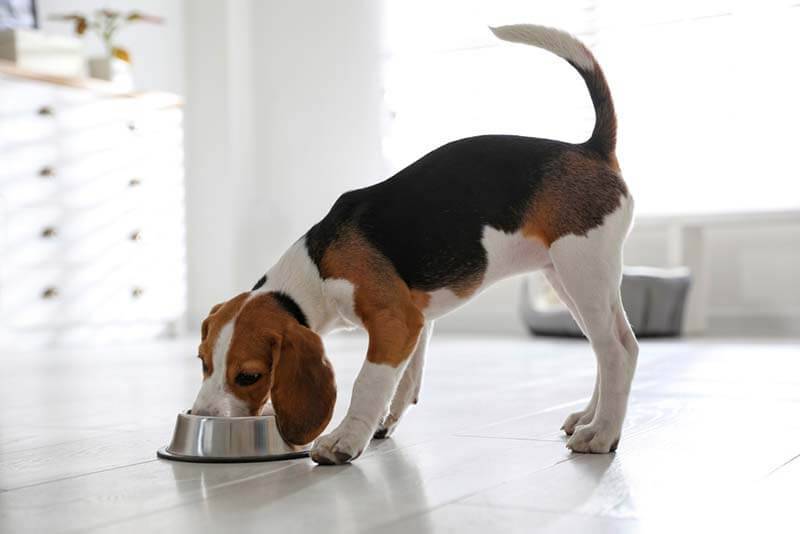
Dog Appetite Loss and Lethargy: The Essentials
The cause of the condition is important – physiological or pathological, it depends on whether the dog needs to be treated.
If the problem is physiological, just observe the dog and, if possible, correct its behavior.
If the problem is pathological, and the development of the disease is possible, provide first aid to the pet and consult a veterinarian.
If you are in doubt whether this is a disease or just a picky dog, seek the advice of a doctor. Usually, even just by collecting an anamnesis, the doctor can understand if the pet is sick.
Freagraí ar cheisteanna coitianta



